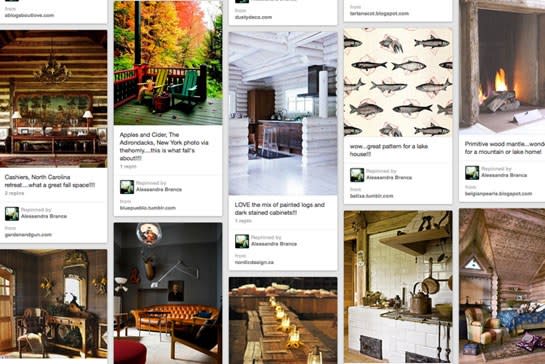Can You Design a Home Remotely?
Technology—from video communication to app-based design services—has enabled architects and designers to reduce the number of face-to-face meetings and time-intensive walk-throughs with clients in their hometowns. But it’s helped them take on out-of-town projects more easily, too. Being comfortable working remotely makes business sense—it helps clients eliminate potentially cost-prohibitive site visits and offers the opportunity to expand your business, and your aesthetic. But those who do it regularly say there are a few important guidelines.
First, an initial visit isn’t optional. “I don’t like to take on a remote job unless I have the ability to see a space in person at least once,” says interior designer Elizabeth Muraro Hague, who’s currently designing a beach house in Texas from her headquarters in New York City. “I only need to visit once to get a sense of the scope, but I really get inspired when I first stand in a space.”
Where working remotely can get complicated, though, is in the delegation and execution. On local projects, designers are overseeing the progress as it’s happening; issues can be addressed or amended in real time. “On out-of-state projects, builders often make more aesthetic decisions without the input of a designer or architect,” cautions Hague. This can cause headaches, delays, or errors. “You have to think a few steps ahead and be sure that you get answers on immediate needs as well as answers—or at least a strong direction—on things you’ll need down the road,” says Joshua Greene of Manhattan-based Hernandez Greene, who is working on homes in Los Angeles, Napa, and Alabama.
Designing from far away also requires designers to be more resourceful. “You have to be even more on your toes than when you work locally, because you can’t run back to the office for something you forgot,” says Palm Beach, Florida–based designer Leta Austin Foster. It can also entail doing more research on the place. “We very much consider location when designing,” says Greene. “For example, we’re working on a shingle house in Napa Valley, and we’ve had to explore shingles in earth tones because they relate better to the surrounding landscape.”
Here are some more pointers for getting the process down to an art.
Communication
Good communication is essential between the designer, the architect, the contractor, the project manager, and, of course, the client on any endeavor, but especially so on out-of-town sites; subcontract wisely. “An ace contractor can help tremendously by understanding your vision, keeping an eye out for unexpected issues that inevitably arise, and coming up with smart and sophisticated design solutions,” says Greene. “The opposite is when you show up to a job site that you haven’t been to in a month, notice things that aren’t done correctly, and then spend the majority of your meeting bogged down trying to fix problems that could have been avoided.”

Alessandra Branca Pinterest
Technology
Use it—apps like Instagram and sites like Pinterest can help communicate your ideas more convincingly. That said, says Greene, “an app is never going to calm a client down when they are freaking out on a job site and you are not there.” That’s when you pick up the phone. Second, hire tech-savvy subcontractors. “I need to work with people who are just as technology-friendly as I am,” says Los Angeles–based Nina Freudenberger of Haus Interior, who’s working on a project in London. “Sadly, this rules some vendors out, but that is the reality of working from a distance—and critical in making sure things are done properly.”
Expectations & Delegation
Even more so than with in-town projects, remote ones require everyone to have clear expectations from the outset, says Freudenberger. “I can’t meet on-site with one day’s notice, but I am available on the phone or for videoconferencing,” she says. “Often that just requires all parties being more organized.” Delegating is also key. “You need to find someone your firm can trust to help you with the small stuff,” says Freudenberger, who hires local freelancers for small tasks like receiving deliveries or making sure that the quality of work for, say, the skim coating is done correctly. “Design work can be done through technology, but there are often aspects that just need an in-person look-over.”
Support Staff
Finding competent vendors and skilled craftsmen on location is key for keeping the budget and progress on track—and often, this is research that needs to be done in person. “For projects in cities where we have never worked, such as Birmingham or Napa, we spend more time there in the early stages, setting up appointments, visiting upholsterers and furniture refinishers to assess their quality and how they run their businesses,” says Greene. “Sometimes it’s worth working with your usual vendor and shipping to the site. But oftentimes, you’ll find someone local that you love—and they’re usually a lot less expensive!”
More from AD PRO: Has Instagram Made Design Shows Better?
Sign up for the AD PRO newsletter for all the design news you need to know
